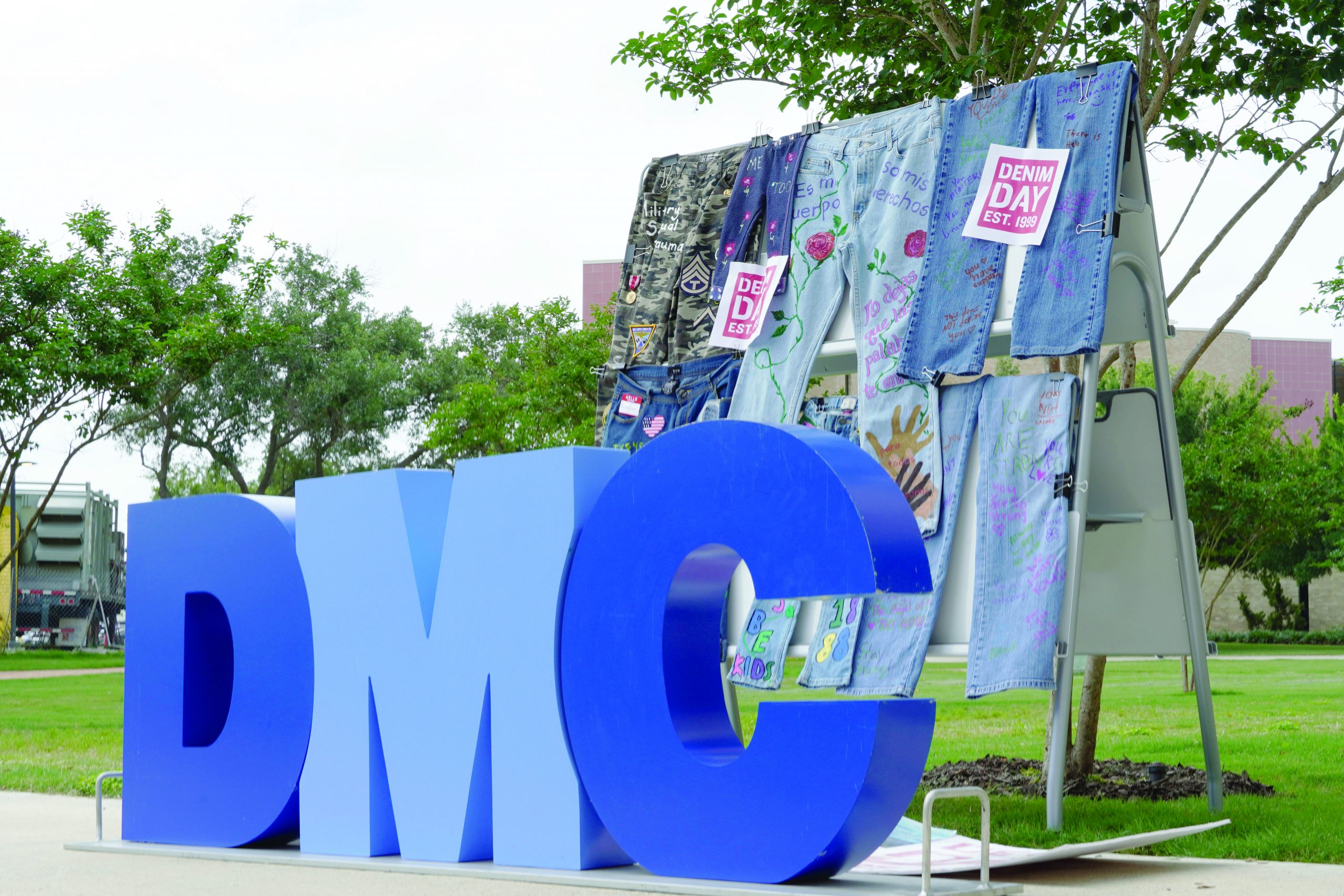 Sarah Adams / Associate Editor
Sarah Adams / Associate Editor
A research study conducted by the Government Accountability Office (GAO) in July 2005 on college textbook costs from December 1986 to December 2004 received no response from the Department of Education but the National Association of College Stores agreed with the report’s findings.
The goal of their study was to better understand college textbook price growth and what factors contributed to this price increase. Ultimately, the study found that along with tuition increases, college textbook prices had risen at twice the rate of inflation, tripling over two decades.
In its latest report provided by Student Watch 2012, the National Association of College Stores (NACS) noted that the average spending on required learning material by students was $655 in the past 12 months. Fifty-seven percent of money spent was spent at the universities’ on-campus or the online campus store, according to students. The rest was spent in personal transactions or off campus stores.
NACS representatives made sure to include the importance of full-time enrollment when considering these studies, which can broaden the details to specific cohorts. When the number of full-time students is considered, the average price students spent at on-campus stores increased to $736, with an average of $449 spent on new books and $306 on used for the 2010-11 school year. Students are spending almost $500 per semester on college textbooks alone.
Used textbooks may seem like a solid approach to purchasing books for the new school year but one problem is revision. According to the April 2009 article “The Investigation into the Rising Cost of Textbooks” from the University of Michigan Library, revisions are made every three to four years even when a previous edition doesn’t necessarily need updating.
Most widely-purchased books are at the top of the revision list and cost on average 50 percent more. When a book is revised, the old edition may still be useful but minor changes like page numbers can add difficulty to student curriculum when adapting to syllabi. To add slight changes, the old version may be taken off the market as the result of teacher preference for updated material, making older versions unavailable for purchase. These sometimes-unnecessary revisions can factor into higher pricing of college textbooks.
In an August 2008 article from The Washington Post, Bruce Hildebrand, executive director of higher education for the Association of American Publishers (AAP) trade group said, “Developing a new textbook is a costly venture with uncertain returns (revenue) and that risk is built into the price.” According to publishers.org, the website for AAP, “Bookstats” partnered with the trade group to conduct a statistical survey in the years 2008 to 2010. The survey concluded the following:
“Educational publishing holds steady and in some segments, shows solid growth – Higher Education’s $4.5 billion net sales revenue for 2010 represents a significant 23.1 percent increase over 2008. K-12, the industry’s largest category by net sales dollar volume, reached $5.5. Billion revenue in 2010.”
Textbooks are a multi-billion dollar industry building books with a risk that consumers, mostly students, suffer. In an opinion piece entitled “A small expense, overall” for The New York Times, Hildebrand noted that actual spending on textbooks has been flat or declining since 2006 according to Student Monitor, a research group.
However, this does not change the increase in price for books, only actual spending. Eric Weil, Student Monitor’s managing partner said freshmen tend to spend more on textbooks than seasoned students.
“When young freshmen come on campus, they don’t realize there’s such thing as a used book. By the end of the year, they realize having a book that’s already highlighted is pretty convenient,” Weil said. This reverts to the availability of used textbooks issue.
Another problem that factors into the price is bundling. According to MSN Money, “Should textbooks really cost $200?” by Liz Weston, to compete with student-to-student sales and used book sales, publishers started bundling books with CD-ROMs and other learning material, sometimes doubling the price of the required textbook.
The CD-ROMs and other added learning material are assigned access codes that usually expire and most of the time cannot be resold, rendering the book useless the following semester. These access codes can also be the problem for eBooks as well, which is where some teachers believe the future of textbooks will be.
“In my opinion, eBooks will be used in the future. Publishers have been trying to encourage faculty to use them for a few years, but most students don’t prefer them yet. In time, I think students will be more inclined to use eBooks. Currently, it could be that students don’t want eBooks because the prices are not competitive and you can’t sell eBooks at the end of the semester, or it could be that renting a textbook is less expensive than purchasing an eBook,” said Jackie Adamson, DMC assistant professor of Psychology.
Adamson said the psychology faculty considers a number of things when choosing a textbook for each class such as writing style and level, content, supplements as well as the price. When publishers offer new, revised editions, they inform her of the changes that have been made. Based on substantive changes, Adamson chooses a book appropriately. She doesn’t always pick the newest one but encourages students to buy the book either way because hers is not a class in which a student is likely to succeed without one.
Students not buying books at all can participate in sharing books in person or going online to open-source websites. Open-source sites offer free alternatives that allow students and faculty to share college textbooks. There are few sites and it is in its experimental stage leaving some of the sites hard to understand or use. Another blooming alternative for students who want to spend less on books is renting. Schools around the nation are offering this route, as well as online stores.
Chegg.com, which partners with American Forest Global ReLeaf Foundation, has an extensive selection of book titles available for rent. Renters can choose time periods ranging from a month to a full semester to “own” the book, then can choose to return it or buy it when they are finished with it.
Usedtextbooks.com, ecampus.com and Bigwords.com are other websites that offer rentals. Bigwords.com has a free iPhone app so students can rent, buy or sell from their phone. According to a New York Times article, “How to find cheaper college textbooks,” new textbooks are less expensive overseas and the author suggests searching sites with suffixes like “.com.au” for Australia and “.co.uk” for the United Kingdom.
Independent selling, buying and renting from overseas or elsewhere carry the dilemma of timeliness, but according to the Higher Education Opportunity Act (HEAO), receiving book information too late will not be a problem.
The House bill states that it will require publishers to provide all information, including price and revision, to faculty members as soon as possible. Along with price and revision information, publishers also have to disclose whether the textbook or supplemental materials are available in any other format.
HEAO will also put a stop to the bundling problem. Publishers will have to offer any items that can be bundled as items to be sold separately, leaving the choice of bundling up to the buyer. These provisions are to be made public to students in pre-registration and registration “to the maximum extent practicable.” The bill went into effect August 2008 with the GAO beginning reviews of implementations no later than June 2011. This will allow students and faculty to make better, more cost-efficient decisions about the book they choose and where they will purchase it.
With revisions being made by publishing companies as quickly as they are, the adverse effect will only add to deforestation and pollution resulting from paper production. According to “The Paper Chase” by Jim Montavalli in The Environmental Magazine, U.S. paper producers alone consume one billion trees every year while producing 735 of pounds of paper per person. Besides eBooks, there is another alternative to this. According to equalrights4all.org, the USDA studies show hemp yields four times more pulp per acre than timber.
In 2011, republican representative Ronald Paul sponsored HR 1831 in Congress the Industrial Hemp Farming Act that pushes for the legalization of growing industrial hemp in the United States. Currently, nationwide stores sell products made of industrial hemp including lotions, soaps and clothing.
Ford and The Body Shop use hemp oil made from the seeds according to CNBC.com, but the actual farming, growth and/or production of industrial hemp are not yet legal. If the U.S. were able to farm industrial hemp, this could also aid in reducing price of college textbooks.
John B. Thompson, Sociology Professor and author of “Where is publishing headed? The Future of Books in 7 Easy Steps,” an article in The Huffington Post wrote that he believes our society is entering a new era where large retail chains become a force to be reckoned with.
Jonizo Calloway, DMC associate professor of English, said she agrees with Adamson on the future of textbooks lying in e-form, but Thompson believes it will be a mixture of both.
“In all likelihood, the future of publishing will be a mixed economy of print and digital rather than a one-way shift from print to digital and the most successful publishers will be those who are able to structure their businesses in a way that enables them to take full advantage of both,” Thompson said.





